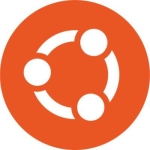What is our primary use case?
My main and only usage of Red Hat Enterprise Linux is for the on-premise workload. We use it for running Red Hat Ceph Storage and running automation using Ansible. Other than this, I use it for doing any auto test that I would like to do on a Linux-based machine.
What is most valuable?
From a security perspective, the most valuable feature is SELinux. SELinux provides good security. It's doing a good job of protecting my real estate.
The portability of applications and containers built on Red Hat Enterprise Linux is great.
What needs improvement?
It has its own ups and downs. Most of the time, it's pretty stable, but sometimes, you'll find some weird bugs that could affect the availability of your running machine. Red Hat can improve its operating system by making it better from the quality assurance perspective. Users do find bugs, which they, of course, shouldn't encounter. A better QA would probably make the job a lot better. It would make the product a lot more stable than it's today.
For how long have I used the solution?
I've been using Red Hat Enterprise Linux for over three years.
What do I think about the stability of the solution?
It has its own ups and downs. The operating system itself is pretty much stable, but there could be some bugs that could affect your availability. While running the Red Hat Enterprise Linux operating system, I did experience some bugs from time to time that did affect the availability on my machine.
Overall, it's pretty stable, but when you do something more hardcore or special, then its stability could be affected. I can't recall anything that I faced in the last few weeks or months, but as you go around production with Red Hat Enterprise Linux and have lots of machines running on it, you can get stability issues or kernel issues. A machine might suddenly be rebooted for no reason. That's my experience with Red Hat Enterprise Linux's stability.
What do I think about the scalability of the solution?
It's deployed at multiple locations. Approximately, there are 200 people using this solution.
How are customer service and support?
The support in Israel from the guys sitting in Israel is great, but when contacting the support engineers across the globe, the support level just decreases, and the reliability decreases as well. The support guys locally in Israel are great, but the support guys worldwide aren't that reliable. Overall, I'd rate them a seven out of ten.
How would you rate customer service and support?
Which solution did I use previously and why did I switch?
I used Ubuntu and Fedora, but mainly Ubuntu. Ubuntu was a great operating system. We had to change from Ubuntu to Red Hat Enterprise Linux due to subscriptions. The enterprise had more and more need for container orchestration, so we ended up purchasing the Red Hat OpenShift container platform, and the use of Red Hat Enterprise Linux in the organization grew significantly.
The security features of Red Hat Enterprise Linux are aligned with the entire industry. They do not have any higher advantage over other competitors, such as Ubuntu from Canonical, so security-wise, it's okay.
How was the initial setup?
It was pretty much straightforward. Deployment of the Red Hat Enterprise Linux operating system didn't take longer than two days.
What about the implementation team?
It was deployed in-house. Three to four people were involved in its deployment.
In terms of maintenance, it just works unless you do anything special with it.
What's my experience with pricing, setup cost, and licensing?
It's pretty expensive, but I'm not familiar with the pricing of other vendors for their operating systems. I'd rate it a seven out of ten in terms of pricing.
Red Hat Enterprise Linux's main advantage is the support that you get by purchasing their subscriptions.
Which other solutions did I evaluate?
We looked at OpenSUSE, but we eventually ended up with Red Hat Enterprise Linux because of the support that Red Hat has in my country. In Israel, Red Hat is a lot bigger than OpenSUSE, so we ended up going with Red Hat Enterprise Linux because of the available support in the country.
What other advice do I have?
If you're evaluating this solution, I'd recommend having your own architects discuss your architecture with the local Red Hat personnel in your state. Red Hat Enterprise Linux is a good product, and it could be even better if you know how to integrate it based on the preferences of your organization. So, my advice would be to have your guys discuss your IT architecture with the local Red Hat people and then decide how to specifically integrate your IT infrastructure with the Red Hat software.
Overall, I'd rate Red Hat Enterprise Linux a seven out of ten.
Disclosure: PeerSpot contacted the reviewer to collect the review and to validate authenticity. The reviewer was referred by the vendor, but the review is not subject to editing or approval by the vendor. The reviewer's company has a business relationship with this vendor other than being a customer: Partner
















